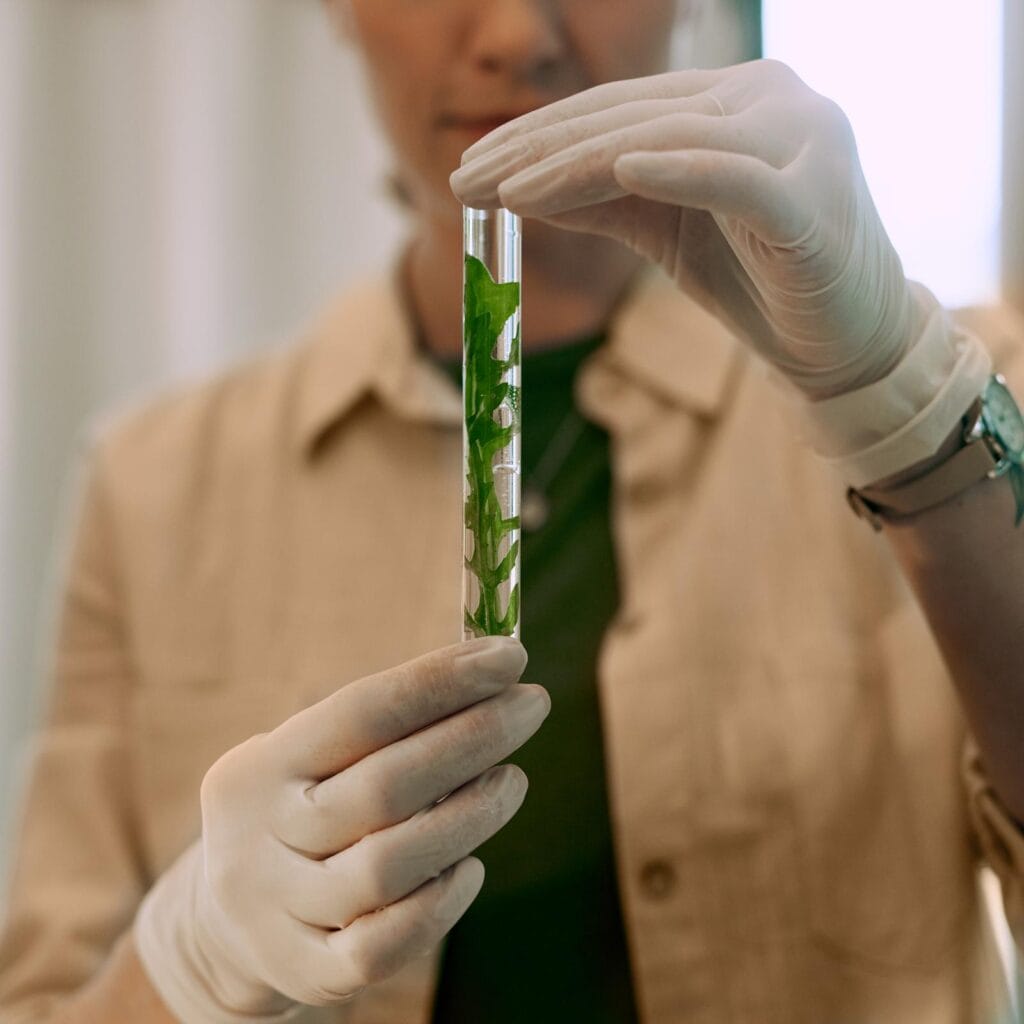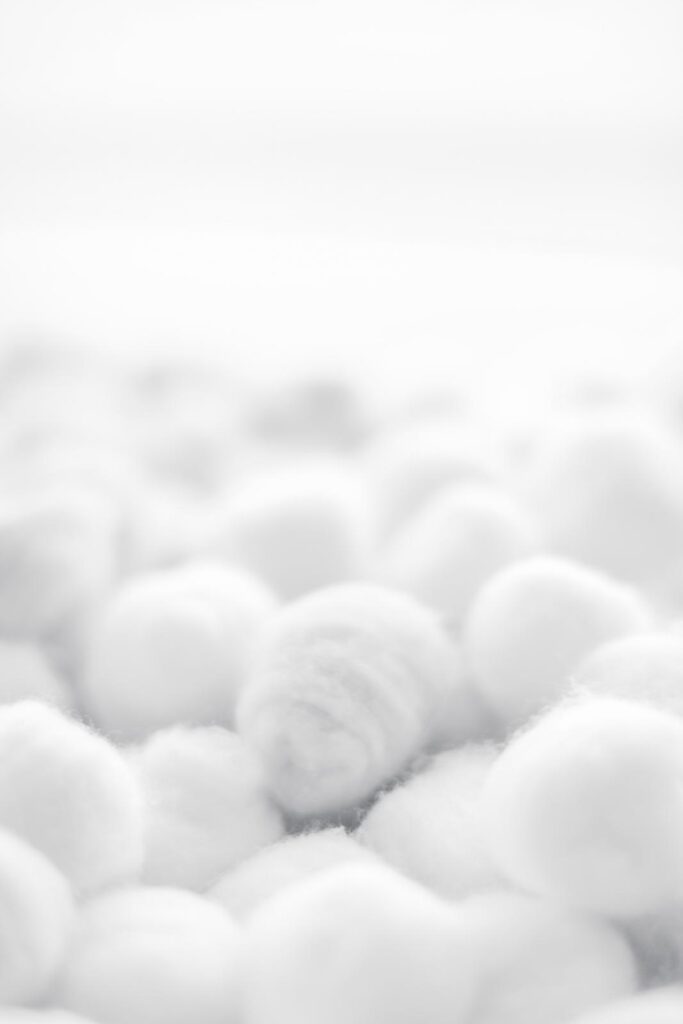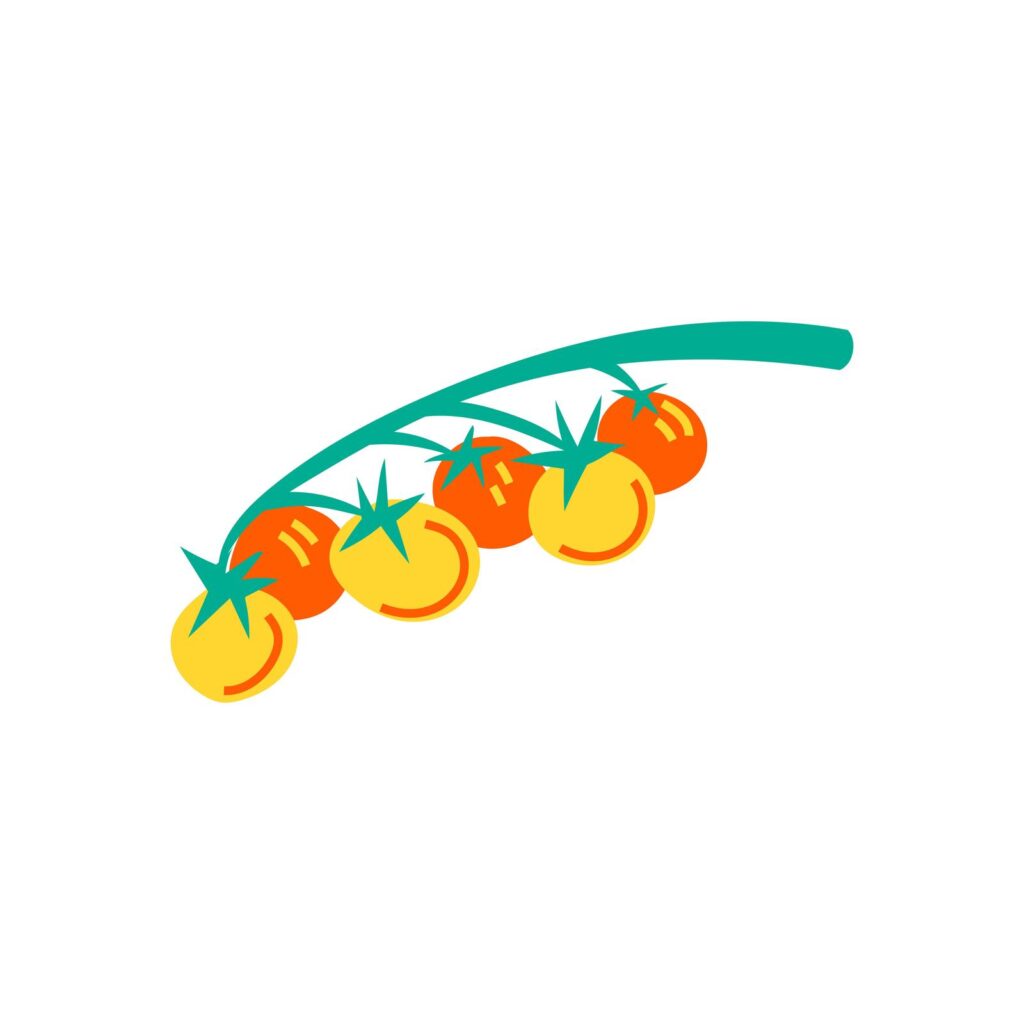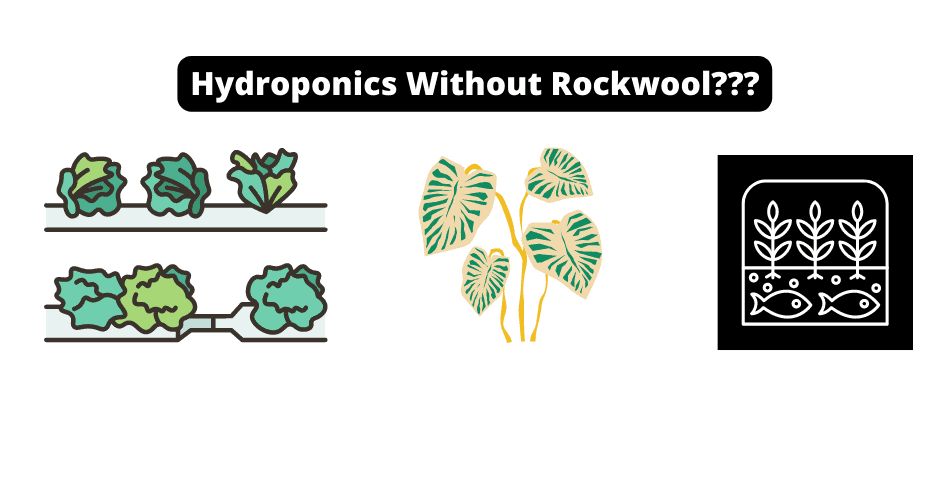Rockwool is a popular growing medium for hydroponic farmers because it offers many benefits that make hydroponic gardening easier.
Due to its porous structure, rockwool can hold water for a long time. The excellent aeration it offers ensures that the roots of your plants get all the oxygen they need to thrive.
It also offers steady performance and has low maintenance requirements, making it an ideal choice for a growing medium from seed to harvest.
You can rest assured that your rockwool substrate will remain in good condition during the growing cycle.
Many growers like rockwool for its versatility in size adjustment, as it can easily break down into pieces of varying densities.
One of the best things about rockwool is that you can easily control its pH level.
The right pH level is crucial since plants can’t take in nutrients unless they’re in the right balance.
Let’s be honest; rockwool is great for germinating seeds for hydroponics.
Many people use rockwool as a growing medium when starting seeds for their hydroponic garden, but here are some reasons you should consider choosing an alternative growing medium.
Rockwool is man-made, and due to its synthetic nature, it cannot compare to natural alternatives like coco coir or clay balls. Rockwool is made from inorganic components like rock or slag, so it lacks the versatility organic mediums provide. It is crucial to remember this when selecting a medium for seed germination.
Rockwool is also costly.

You can save money using a cheaper substitute, such as coco coir.
Coco coir is derived from coconut shells and is a popular alternative to rockwool.
It holds about the same amount of water, and you can easily adjust its pH level.
Another common problem with growing plants in rockwool is that they won’t develop as many roots as they would in other mediums.
Roots may become tangled up if many rockwool blocks are placed too closely together, which can impede growth.
This can be challenging when cultivating plants like tomatoes, which require a deep root system.
You should not feel obligated to use rockwool simply because it’s one of the most common growing mediums for hydroponic operations; there are plenty of other options that are just as effective, if not better.
In this article, we’ll look at possible replacements for rockwool that would satisfy your seed germination needs.
Each of these options comes in a range of densities and sizes to meet the needs of any grower.
That said, here’s how to germinate your seeds without using rockwool.
(We still like rockwool though)

Here Are Some Alternatives to Rockwool in Hydroponics
Some of the classics include:
Remember, we want to avoid using normal fertilizers for hydroponics.
Coco Coir
Coco coir is obtained from coconut trees’ fibers. It has hydrophilic properties, quickly absorbs water, and turns gel-like when wet.
This means it will have enough water to keep your plants from drying out but not so much that it will drown them or cause root rot or fungal growth.
Coco coir can be added to soil mixes or used as a hydroponic medium.
Coco coir can be purchased as compact blocks for your gardening needs.
You can start your seeds indoors with these compact blocks, as they are lightweight, small, and easy to store.
How To Use Coco Coir To Germinate Your Seeds
First, take the blocks out of their packaging and put them in a big bucket.
Just add water according to the package’s instructions and let it sit for some time.
Coco can soak up to five times its weight in water, so be careful when adding water.
The blocks begin to dissolve as soon as they take in the water. After that, you can mix them together.
Then, place the mixture in your containers or grow tray and plant your seeds at the recommended depth.

Coco Peat
Unlike coco coir, this growing medium is obtained from coconut husks, which are biodegradable, making them a more earth-conscious sustainable growing medium.
Coco peat is more absorbent than coco coir; it also has a higher water-holding capacity, which makes it perfect for plants that require a lot of water.
It is much better than rockwool because it is a biodegradable resource that does not pollute the environment.
Coco peat has excellent oxygenation characteristics and can store and release nutrients to plants over long periods.
This growing medium’s natural pH ranges from 5.0 to 6.8, making it somewhat acidic but still in the neutral zone.
To top it all off, it is perfect for first-time hydroponic gardeners because it is lightweight and easy to use.
How To Use Coco Peat To Germinate Your Seeds
You will need the following items: the growing medium, water, seeds, and a container or tray.
Put some growing medium in a tray or any other suitable container.
Note that the coco peat must be soaked in water before being introduced to the system.
Soak the coco peat, then plant your seeds in it.
Planting the roots with plenty of room between them is essential.
You can create a humid environment by covering the container or tray with a lid or plastic wrap.
Check on the seeds every day to see if they have sprouted.
Remove the plastic wrap or cover once the seeds have germinated, and keep an eye on the moisture level of the coco peat to ensure it doesn’t dry out.
Once the seeds germinate and have reached a specific size, they can be moved into the hydroponics system.
Keep an eye on your coco peat’s pH and make any necessary adjustments.
Coco peat thrives in a pH range between 5 and 7, and either of those values is ideal.

Cotton Balls
If you don’t have any rockwool on hand, you can use cotton balls as an alternative.
Cotton balls are ideal for sprouting seeds because of their large surface areas, which are great for absorbing water and allowing air to circulate around the young plants as they develop.
Plus, you can acquire them without breaking the bank or making a trip to the hardware store because they can be found in almost any supermarket, retail outlet, or bathroom cabinet.
Cotton wool is produced from cotton plants and is, therefore, fully biodegradable.
It is also perfect for growing seeds like peas, broad beans, cress, etc.
Growing seeds with cotton wool is easy and straightforward.

We very rarely use cotton balls, but if we do, we make sure we get organic ones!
Really fun for innocent projects with the kids.
How To Use Cotton Balls To Germinate Your Seeds
Start by soaking the cotton wool in water for around an hour.
Then, place your seeds on top of the wet cotton balls and cover them with damp wool.
It’s essential to keep the cotton from drying out while it’s germinating, so ensure you cover it with a thick layer of wool soaked in water.
Set up your seed tray in a warm spot and gets plenty of light without getting too hot.
It’s important to keep a close eye on the seeds until they grow new leaves, so check in on them daily.
Relevant viewing:
Clay Pebbles
The hydrophilic nature of clay pebbles (hydroton) makes them ideal for hydration applications. They can also hold a lot of nutrients.
This means your plants’ roots can easily access all the necessary nutrients.
The ebb-and-flow and drip systems are the two most common techniques for implementing these clay pebbles (though they’re used all over).
Here are a few things you should and shouldn’t do when working with clay pebbles.
Do’s
Rinse the pebbles well before using them. Refraining from following or rushing through this procedure could cause some costly issues. Get it right from the start by spending extra time on it.
The pebbles need to be soaked for at least six hours before use. The thicker the medium, the easier it is for your plants to get the water they need.
Don’ts
Don’t ever allow your clay pebbles to dry out. Make sure the pebbles are always wet.
It’s only safe to reuse the pebbles after washing them thoroughly and then disinfect them in a solution of isopropyl alcohol or peroxide.

Perlite
The term “perlite” refers to a naturally occurring siliceous rock. It can grow from four to twenty times its initial size when heated.
Perlite’s primary use in the garden is to improve compost blends and help plants retain water.
Simply put, perlite helps seeds germinate and grow faster.
Perlite can be used in a variety of ways in a hydroponic garden.
It is light, which helps keep plants from getting too much water by giving the roots more oxygen when they are being watered.
Perlite can also be used as a sole growing medium.
Perlite’s ability to absorb water and release it back into solution when dry makes it useful for controlling pH levels in hydroponic systems.
Slowly reintroducing water to the solution helps avoid pH swings that could otherwise lead to nutritional deficits.
Benefits of using perlite for hydroponics
Plant roots in hydroponic systems can be grown in perlite trays filled with nutrient-rich water.
This ensures the roots receive a healthy dose of water and air.
Plants cultivated hydroponically with perlite produce heavier crops, resulting in higher-quality products.
Aside from helping crops grow better, perlite doesn’t attract insects or diseases and is easy to replace.
Perlite is commonly used for growing plants like:
Lettuce
Lettuce grown hydroponically in perlite has heads that are usually bigger, more uniform, and have much less tipburn than lettuce grown in soil.
Strawberry
Strawberries need a lot of oxygen in their root zone, and perlite’s high porosity provides them with plenty of oxygen at their roots.
**Strawberries are not super easy to grow**
Tomatoes
Tomatoes grown hydroponically, using perlite, are less likely to split than soil-grown ones.
**Tomatoes are not super easy to grow, and we suggest other vegetables**

Our Final Thoughts on How to Germinate Seeds for Hydroponics Without Rockwool
People who grow plants hydroponically are always looking for new and exciting techniques to grow their plants.
And suppose you’ve been looking for a soil-free, hydroponic plant-growing medium that’s as effective as rockwool cubes.
We now hope you have your answer.
Now you know that there are other options besides rockwool for seed germination.
Your available resources and expertise as a grower should also influence your choice.
Tell us what has helped you so far, and which of these alternatives are you willing to try out? Let us know in the comments.
